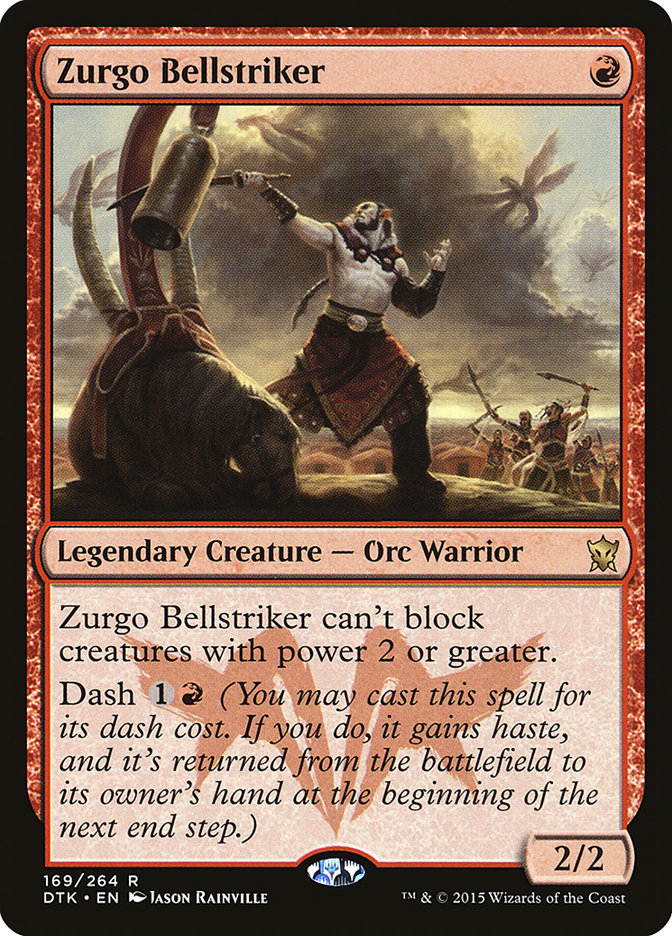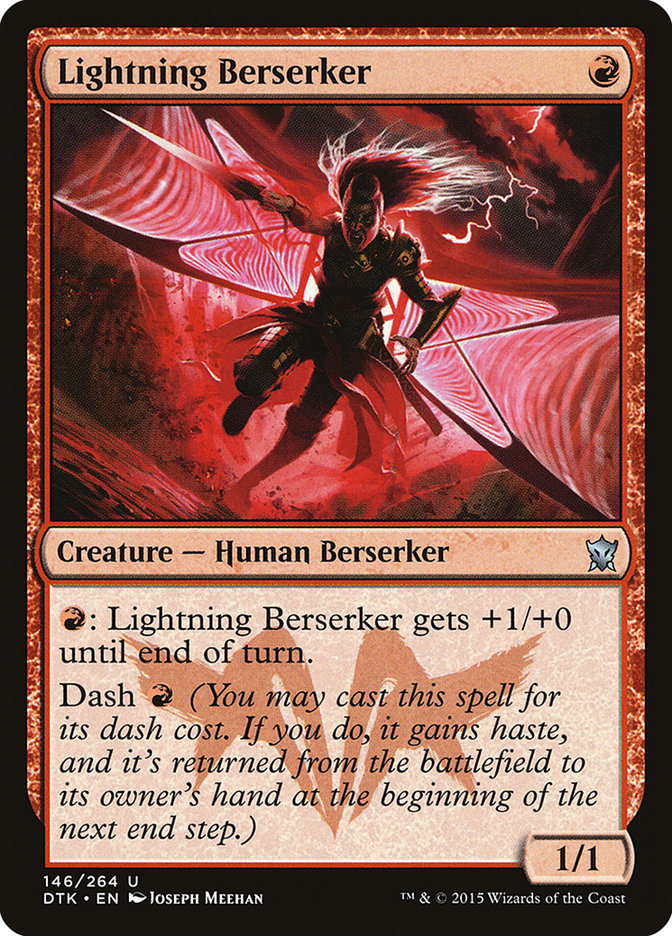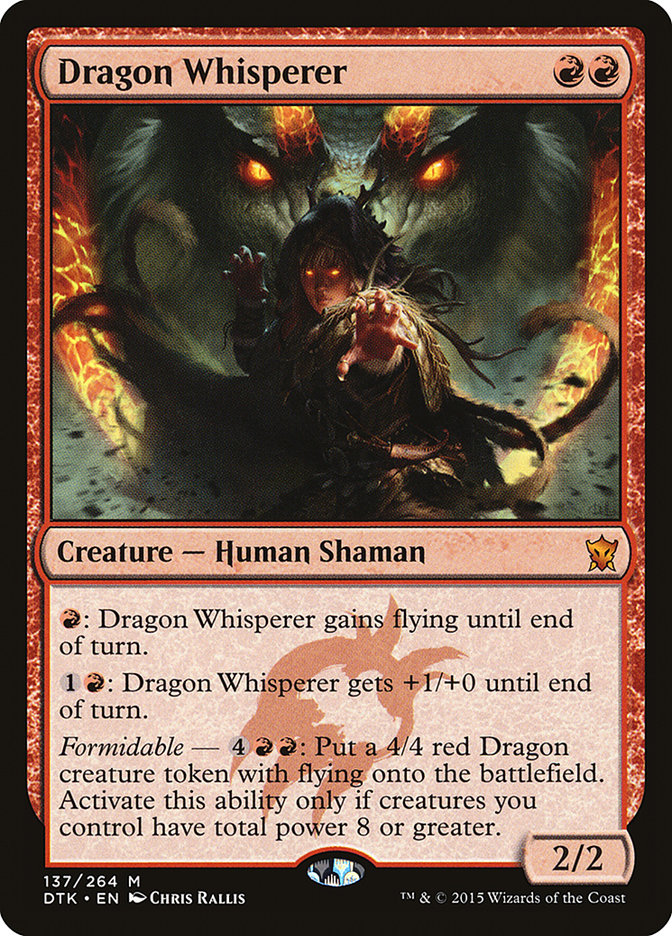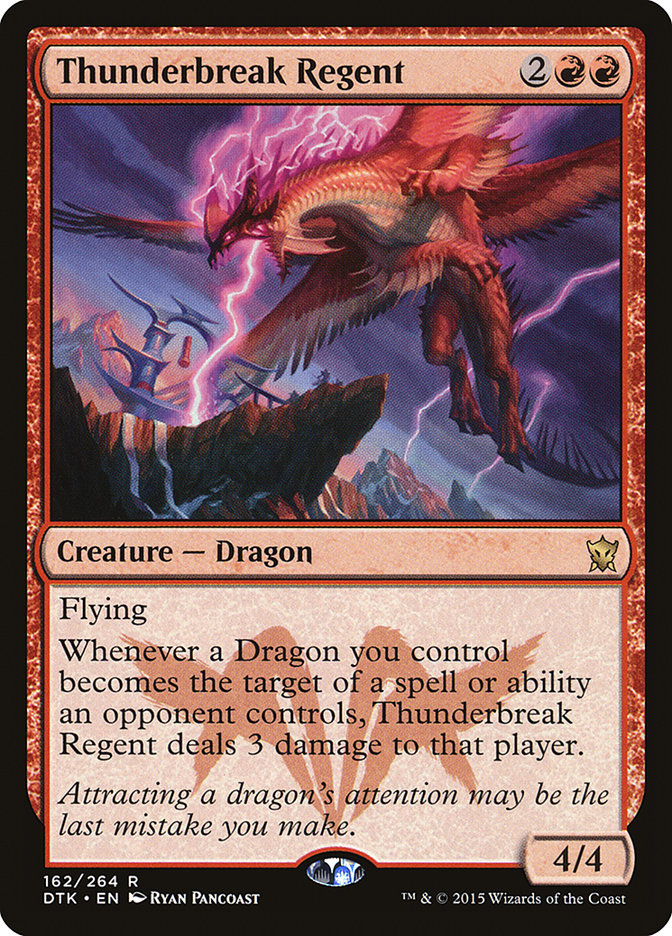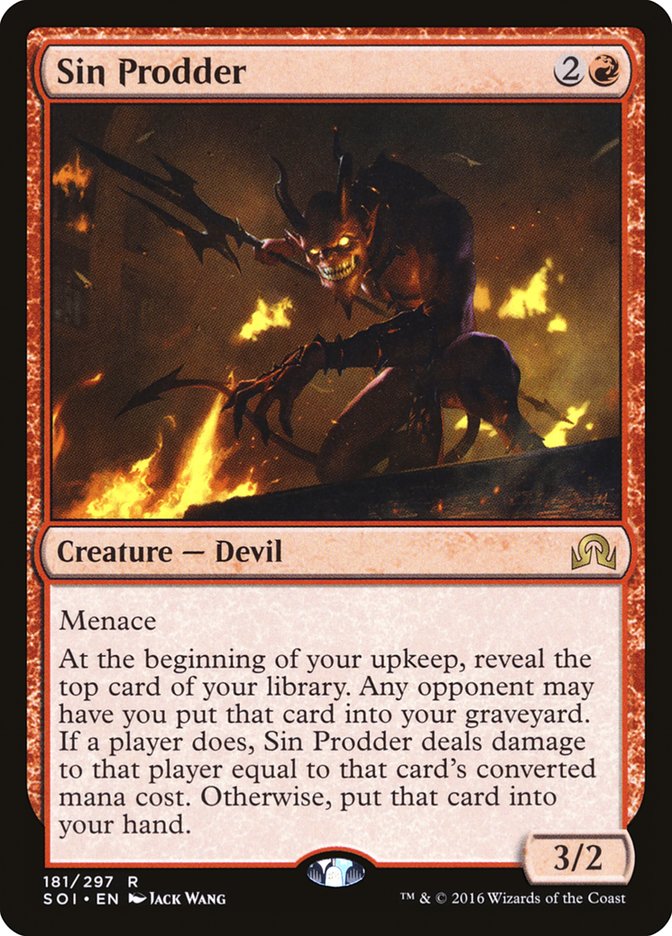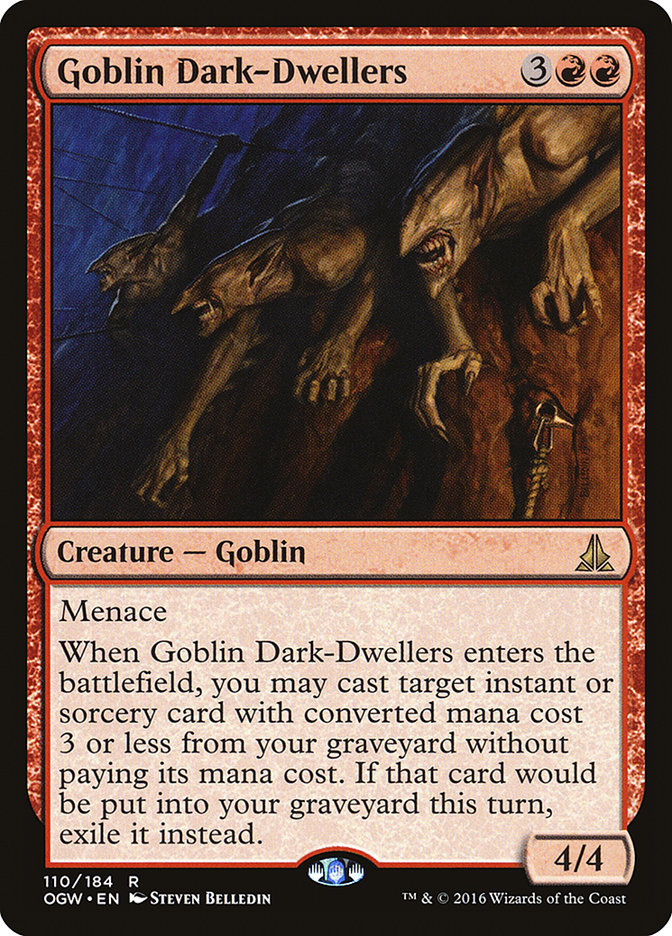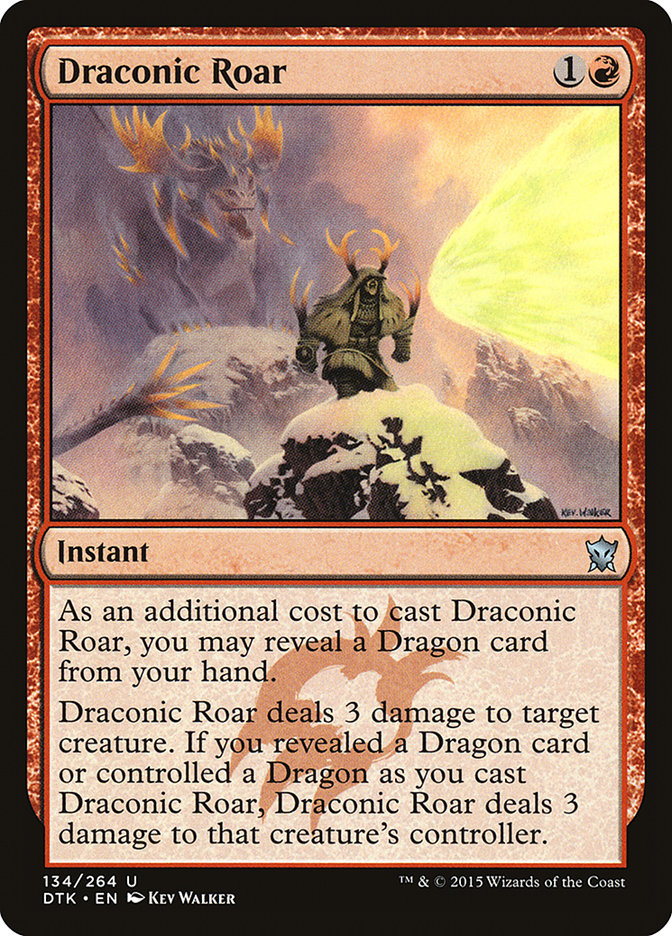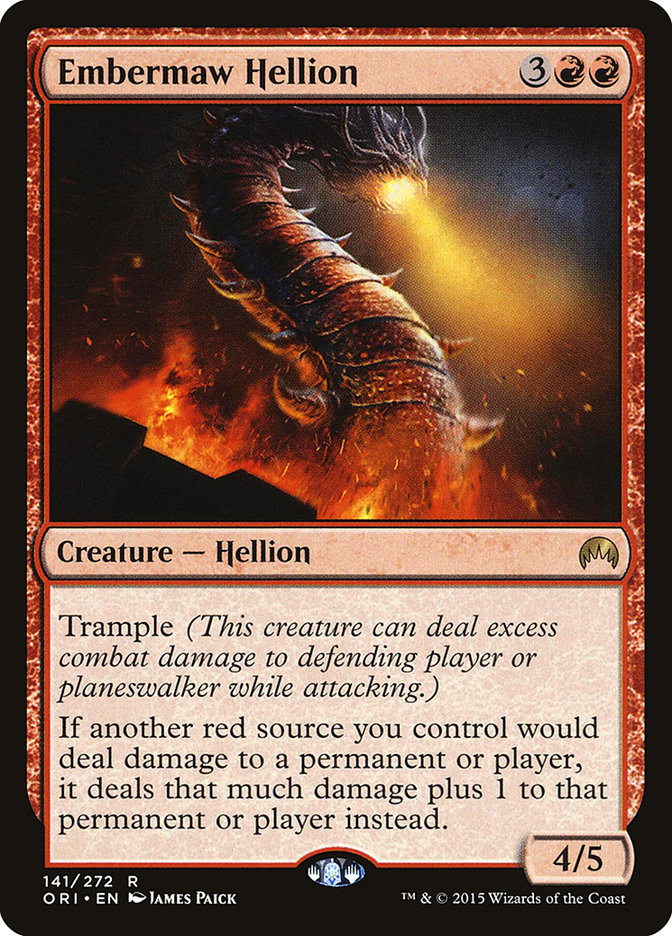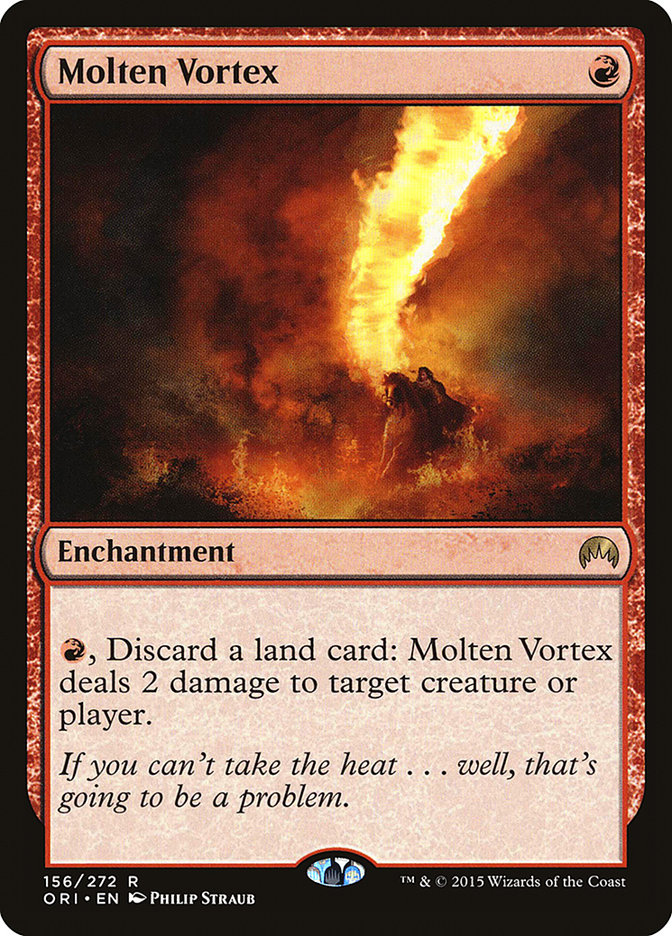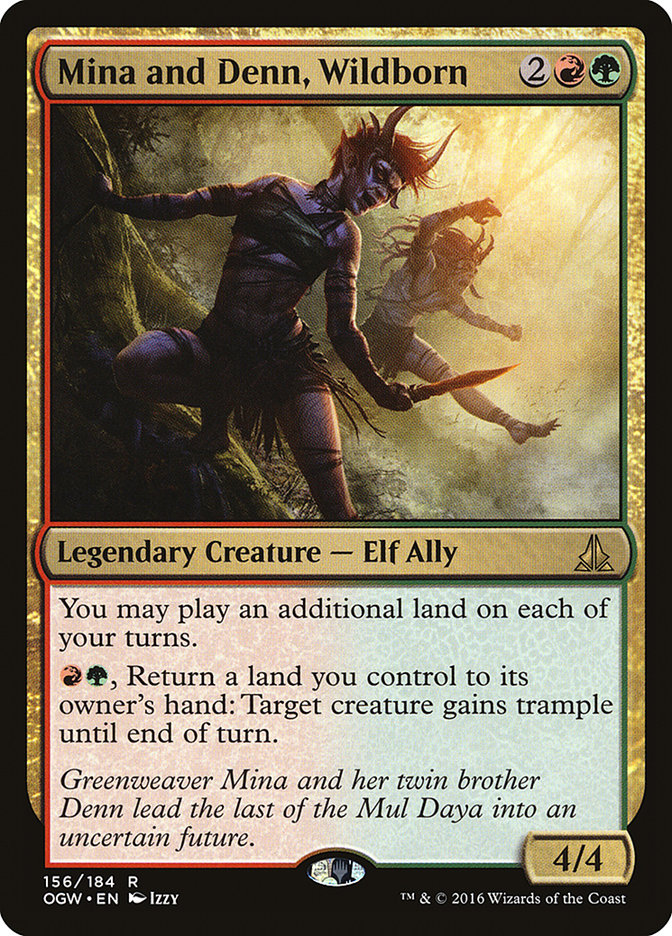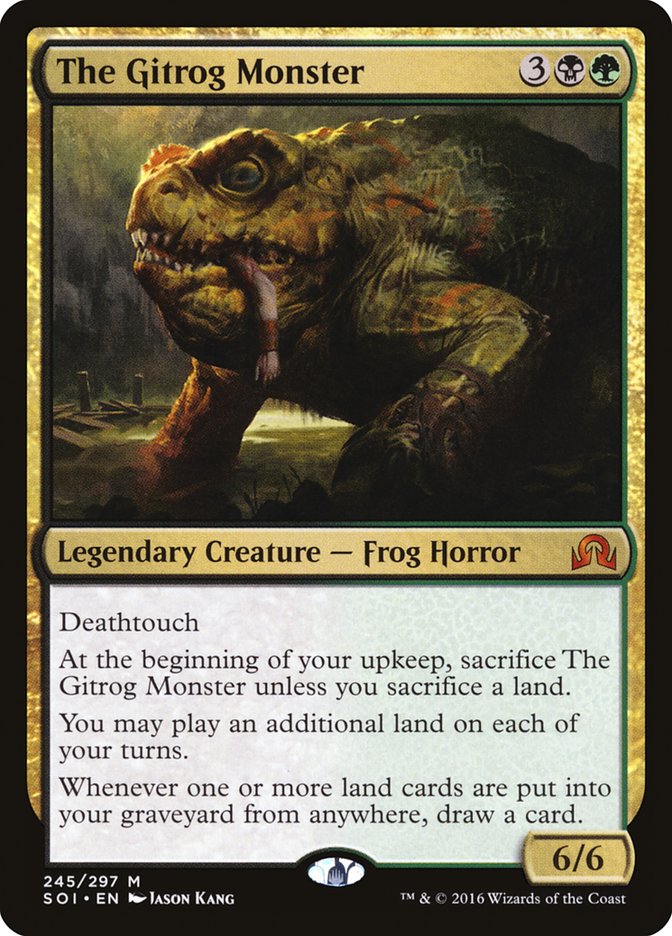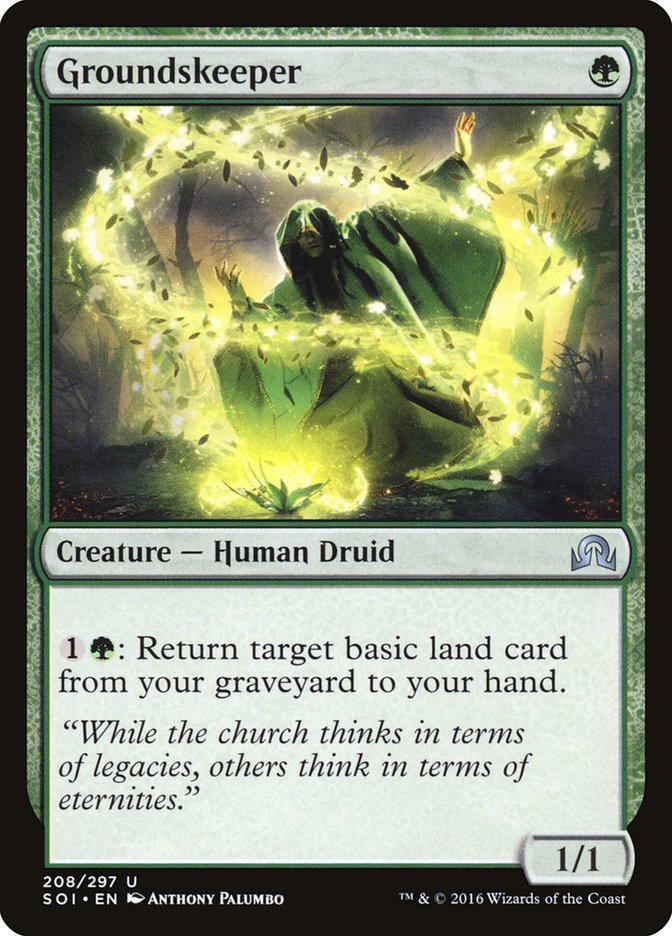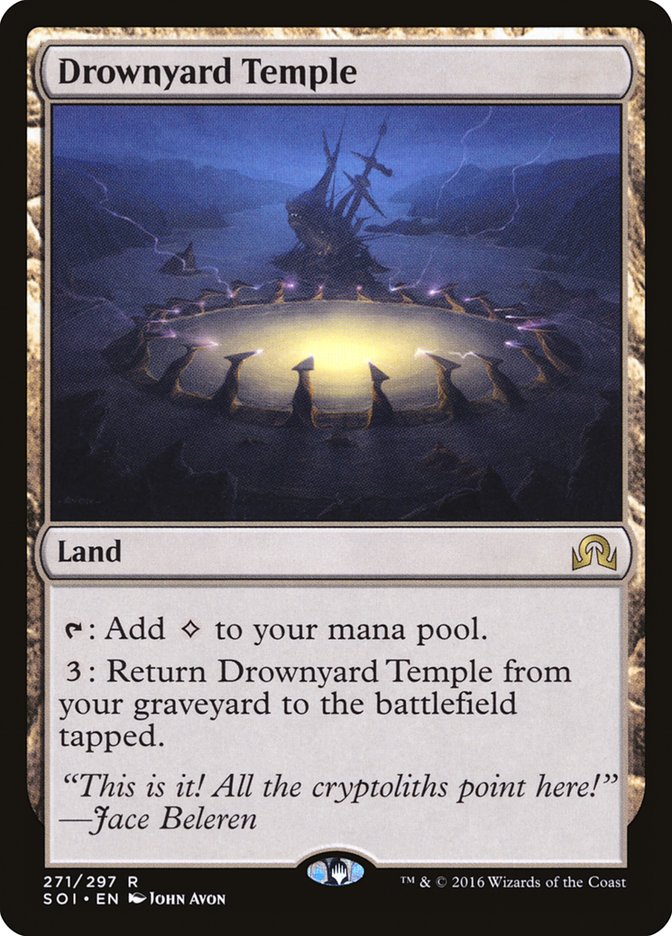It took a while, perhaps longer than we might expect from past experience, but I think we can finally say that Standard has settled down. G/W Tokens, Bant Humans, W/B Control, and U/R Eldrazi are at the top of the heap, with various ramp and Cryptolith Rite decks, W/R Humans, and Seasons Past decks being the next tier down.
Well, the actual top tier appears to be “whatever Seth Manfield is currently playing” if we’re talking about Grand Prix, but as we’re more focused on store-level events, that is unlikely to be a concern for you.
One thing I like to do once formats settle is look at cards that are not seeing any play but are (on paper at least) good and interesting enough to be worth a look. I started to do that this week and was all set to write about a bunch of cards that we could be playing. Then this weekend’s Preliminary PTQ happened, and it was won by perennial red aggro player Mike White. His deck was once again red, but calling it aggro would be a stretch. While watching him take the event down, I realized that not only would I be writing about Mike’s deck, but also about how people really aren’t playing enough red cards.
Can We Be Aggressive?
While preparing for the PPTQ with my friends, one of the recurring themes was that this is a very slow format. Even the more aggressive decks in the format are not winning until turns 5 and 6 at best, with the possible exception of the white-based Human decks. With G/W Tokens and Bant Company decks doing their best to gum up the battlefield before finding a way through and the “ramp” decks cutting a lot of their ramp spells, there is a definite hole in the metagame where a red aggressive deck would normally fit. Last season that space was taken up by Atarka Red with its combo finish as Plan A and the go-wide strategy as a terrifying Plan B. We lost a lot of the best cards from that deck, so any red-based deck we build will need to start from a different base.
Of the aggressive creatures from Atarka Red, only Zurgo Bellstriker and Lightning Berserker remain. We do still have Makindi Sliderunner, but without fetchlands, that isn’t much of a boon. We did gain Falkenrath Gorger, Skin Invasion and Village Messenger to go along with our remaining one-drops, but none of those can hold a candle to Monastery Swiftspear. Kessig Forgemaster and Ravenous Bloodseeker aren’t bad options at the two-drop slot, but with the loss of Become Immense and Temur Battle Rage, we find ourselves wanting more creatures than before.
There are more challenges, though. The most-played creature in Standard right now is Sylvan Advocate, which puts the brakes on the early game for most aggressive creatures. With Lambholt Pacifist growing in popularity and Thraben Inspector trading with 2/1s while still drawing you a card, it’s little wonder that red decks have not taken hold this season. Oh, and there’s also this card Reflector Mage. It’s pretty good too.
Mike’s Approach
Let’s have a look at the deck Mike used to take the tournament down:
Creatures (24)
- 4 Thunderbreak Regent
- 4 Lightning Berserker
- 4 Dragon Whisperer
- 4 Goblin Dark-Dwellers
- 4 Sin Prodder
- 4 Insolent Neonate
Lands (24)
- 24 Mountain
Spells (12)
Sideboard

Elegant simplicity at its finest. Mike put not one, not two, but three exclamation points after the Mountains line on his decklist, letting the judge staff know that he is well aware that he is registering more lands than he perhaps ever has in a tournament. When even Mike is turning to a more midrange strategy, it’s a sure sign that aggro just isn’t viable. Still, though, he could not abandon his roots. Mike clearly put this list together with an eye to curving out and being able to kill the most-played early creatures in the format after dropping a turn 1 threat, but there’s a lot more going on here.
The biggest thing that sticks out is Mike’s creature selection. With the lone exception of Lightning Berserker, every single one of them either has or can gain evasion. Even the lowly Insolent Neonate, which is as much an enabler for Fiery Temper and a way to cycle through excess lands late-game as it is a one-drop attacker, has menace. When a turn 2 Sylvan Advocate isn’t stemming the aggressive tide, many of the green-based decks in the format will have trouble racing you. Even Lightning Berserker, lacking in evasion though it is, can be difficult to block as it easily trades up with a minor investment.
The inclusion of Dragon Whisperer warms the cockles of my heart, it does. Before Nykthos, Shrine to Nyx rotated, I tried my best to make this card work in a red devotion shell. It didn’t. Watching it in action today made me very sad that I gave up on our susurrating friend so quickly. Early in the game, it costs a single mana to take to the skies, exploiting the well-known weakness of G/W Tokens in the air. Later on, we can pump the power, or, if we’re lucky, start making some Dragon friends to whisper to.
Sin Prodder put in work. When the card was previewed, there was a lot of concern that it didn’t really have a home. In aggressive decks where the damage would matter enough that people would have to think twice before sending cards to your graveyard, you were likely to have a very low average cost, which lessens the impact of the damage. If your average cost is higher, you are probably not putting enough pressure on the opponent that they care about taking five damage, for example.
I think this list has found a solid balance. Lightning Berserker may only be a one-drop, thus only hitting for one damage off Sin Prodder, but a card that has been defined as “Fireball with buyback” is often going to make the opponent wary about taking it. Early in the game, especially before the opponent has seen a Goblin Dark-Dwellers, taking three to put an Exquisite Firecraft into the graveyard seems like a good deal. Of course, when we cast the Goblin Dark-Dwellers shortly after, it looks much less so. Oh, and it has menace too. Seriously, blocking against this deck is miserable.
The removal suite is also carefully selected. Fiery Impulse is only in the sideboard, as Mike preferred to keep his maindeck removal at the three-damage mark. Every spell kills a Sylvan Advocate, an Eldrazi Displacer, or a Reflector Mage. The evasion makes planeswalkers hard to keep around at the best of times, but the ability for all the burn spells to go to the dome makes for an even rougher time.
Finally, the one-two punch of Draconic Roar and Thunderbreak Regent. Dragons are awesome, this much we know. Thunderbreak Regent was everywhere a few short months ago, but its demise was quick and brutal. Mike wants to bring it back, and I am right behind him. I would have loved to see some Avaricious Dragon in here too, as the additional card draw and free discard outlet for Fiery Temper could be valuable.
Although I can get behind the exclusion of Goldnight Castigator from this deck (we’re often going to be racing, and the Castigator is notoriously bad at that), I would very much have liked to see the inclusion of some colorless mana in this deck. Thought-Knot Seer and possibly even Reality Smasher seem like good fits here, but I am especially interested in Eldrazi Obligator as a sideboard card. I am also a bigger fan of Lightning Axe than I am of Roast. The only other thing that surprised me was a lack of Seismic Rupture as a way to beat decks that are slightly lower to the ground than this is.
My Take
My original plan this week was to take a look at some Magic Origins cards that were being overlooked. Mike’s victory changed that plan slightly, and instead I spent a long time looking at red cards that are not being played. Two of those, Embermaw Hellion and Molten Vortex, are not only both from Magic Origins but are also likely playable in the same deck.
I picked up a playset of Embermaw Hellions as soon as the set released. I am a sucker for effects that increase damage, though generally only if they are one-sided. Attach the one-sided version to a reasonable body and we’re very much in business. After resolving Embermaw Hellion, we get to kill four-toughness creatures with Fiery Impulse, Draconic Roar becomes even scarier, and cards like Fall of the Titans gain a level of deadly. The interaction with trample is exactly what you want it to be, increasing the damage dealt to both the blocker and the player. Sadly, the ability only works on other red sources, but it is cumulative.
The obvious place to play this card would be somewhere like Mike’s deck above, but I am tempted by the allure of combining it with Molten Vortex. Why discard a land for a Shock when we can get a Lightning Bolt instead? Why, indeed. Molten Vortex on its own is great at picking off early, aggressive creatures or at applying the last couple of points of damage after an unfavorable block. What really appeals to me is the cost: one mana to cast, one to activate. The card has yet to see any serious play, but I’m struggling to understand why.
The question then becomes how we best build around the shell of Embermaw Hellion and Molten Vortex. Both cards are good on their own, but pushing them to the next level needs to be our goal. Some cards that spring to mind:
Fits the bill on almost every level. An efficient threat, the ability to grant trample (which we mentioned works well with Embermaw Hellion), being red itself, and of course that activated ability to return lands to our hand to later be discarded to Molten Vortex. That additional land drop will come in handy as well with some of the other ideas I have for the deck.
Yup, there it is. The Gitrog Monster fits perfectly here, drawing us a card every time we discard to Molten Vortex while also really liking the ability to gain trample. Sadly it’s not a red source, so we don’t get to play with that interaction here, but let’s not get too greedy, hmm?
Sadly, there is a limit to the number of lands we can play. We’ll also need to keep some on the battlefield, of course, for the casting of spells and whatnot. Pesky game rules, getting in the way of our fun. Groundskeeper is fragile, but with Molten Vortex, we get a combo that reads “1GR: Deal 2 damage to target creature or player.” Add in The Gitrog Monster, and things get really silly.
It is somewhat brave to play a colorless-producing land in what is likely to be a three-color deck, but the synergies here are so good that I don’t see how we can leave it out. The pseudo-ramp, the recurring sacrifice ability for The Gitrog Monster…it just fits.
We might be going a little deep here, but I really like this for a few reasons. If our engine is running, we can play three lands per turn. That’s three triggers for Embodiment of Fury, giving us three trampling attackers. The card itself has trample and is red, which are both great benefits in this deck.
We can round the deck out with Sylvan Advocates (obviously), Tireless Trackers (again, seems obvious), and some removal. Omnath, Locus of Rage is a stretch inclusion, as is Sylvan Scrying to fetch up Hissing Quagmire or Drownyard Temple. Devour in Flames may well be a solid removal spell for this plan, too.
Still to Come…
I seem to have hit upon a rich vein of inspiration for some brews, most of which we will talk about in the next couple of weeks as my travel slows down. Next week, we are going really deep on a Shadows over Innistrad mechanic in combination with two cards from Magic Origins that are languishing in binders as we speak. Yes, there are Clues in that setup.
As always, friends, thanks for stopping by the LAB – where Lansdell’s Always Brewing.
Until next time…Brew On!


